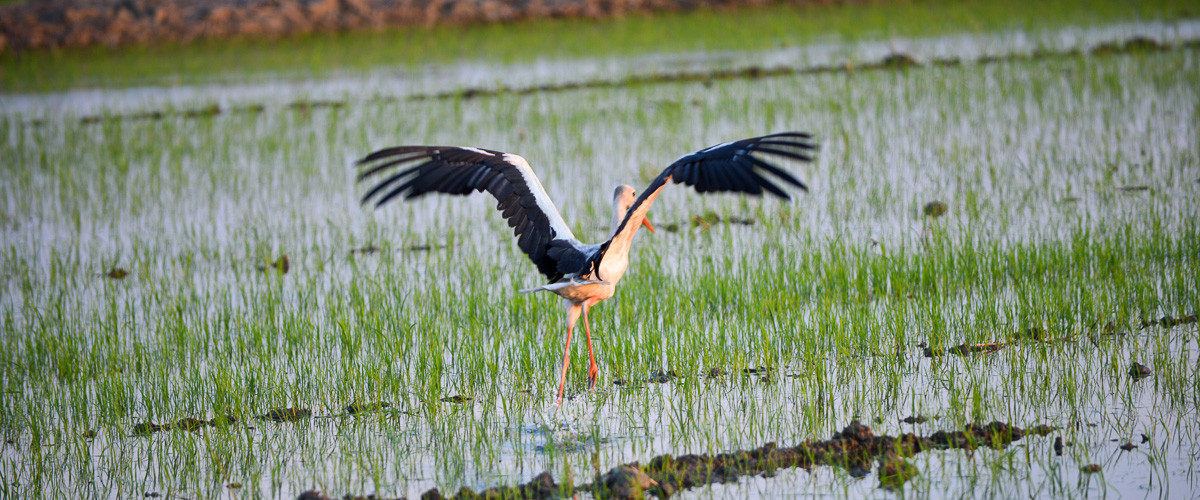Where and when do rice and its cultivation originate?
Rice, as well as being the most eaten cereal crop on our planet, is also one of the oldest.
Many people know it has its roots in the Orient, where rice, its cultivation and its consumption are still today a fundamental part of the social, religious and cultural tissue.
Fossil evidence from five thousand years BC suggests the origins of rice are in the Yang Tze valley, in China, but recent research has traced the prehistory of this crop even further back in time. Wang Zaude, professor at the University of Peking, has found traces of semi-processed paddy rice from 10’000 years ago. Other theories, on the basis of the genetic profile of Oryza sativa (the scientific name of a current species of edible rice), suggest it originated from the island of Java about eight thousand years ago, or from a region of Cambogia.
What seems certain is that about twenty species evolved from the primordial species of this cereal. Only two of these are important today as food crops: Oryza sativa, which originated in Asia, and Oryza glaberrima, which originated in Africa.


In more recent times, the development of rice cultivation can be traced with confidence to southern China in 5’000 BC, and to Indochina, in northern China and in the Indus Valley during the 4th millennium. The cultivation of this crop only found its way to the West after many millennia, first taking root in Mesopotamia, and then in Greece where it was first used as a food crop during the time of Alexander the Great.
The accounts of Persian explorers feature this cereal, that seems to have been already widespread in the area of modern-day Pakistan.
Rice finally arrives in Spain in the 8th century AD with the Arabs. However, in Europe its use remains limited to its serving as a spice for all of the Middle Ages and into the Renaissance, when it is used mostly as a medicine or cosmetic.
It is during the Middle Ages, from the year 1000 AD onwards, that rice spreads throughout all of Europe, including in Italy. In a book from 1300 AD, the “Book of the Accounts of Expenses” of the Dukes of Savoy, a purchase of “rice for desserts” at 13 imperials per pound is recorded. At the end of the 15th century, rice cultivation finally becomes firmly established in northern Italy, namely in Lombardy and Piedmont, in the area of modern-day Vercelli. It is here that Ludovico Sforza and his brother Galeazzo install the first rice paddies (then called “a sea of squares”), aiming to taking advantage of the frequent flooding of the Po river for this crop.
Where is rice cultivated today?
Even today, most rice is cultivated in Asia.
The self-sufficiency of the EU in rice is about 70%, while the rest is imported.
About 80% of the production of rice in the EU is carried out in Italy and Spain, while 12% comes from Greece and Portugal. The rest is produced in France, Romania, Bulgaria and Hungary. Outside of the EU, rice is cultivated in the Russian Federation (120’000 ha in the region of Krasnodar and 50’000 ha in the eastern region of Vladivostok) and in the Ukraine (25’000 ha). European rice is planted in spring; in southern Europe, such as in Italy, sowing occurs in early April and the harvest is between September and October, whereas in eastern Europe, such as in Romania, rice is sown at the end of April and harvested between October and November.
In most of western Europe, precipitation is concentrated in the early phases of crop development (between April and June) and during the harvest season. Average temperatures vary between 10° to 12° C during germination and 20° to 25° C during the harvest. In most of eastern Europe, the rice-growing season is shorter than in western Europe, because of lower average temperatures.


The presence of rice paddies, however, should be safeguarded, as they contribute to maintaining biodiversity. In fact, they represent the natural habitat of many species of water birds, that would otherwise be at risk of extinction. Rice paddies are important wetlands and as such play an essential role in the conservation of related animal species.


At the same time, it is important to guarantee cultivation techniques that do not damage these ever-rarer ecosystems, that are very sensitive to the use of chemical products. For our crops, as well as always remaining within the limits imposed by legislation, we constantly search for new products and techniques that guarantee the greatest possible sustainability.
Further information related to these paragraphs can be found in the volume “il Riso”, edited by Prof. Aldo Ferrero.
